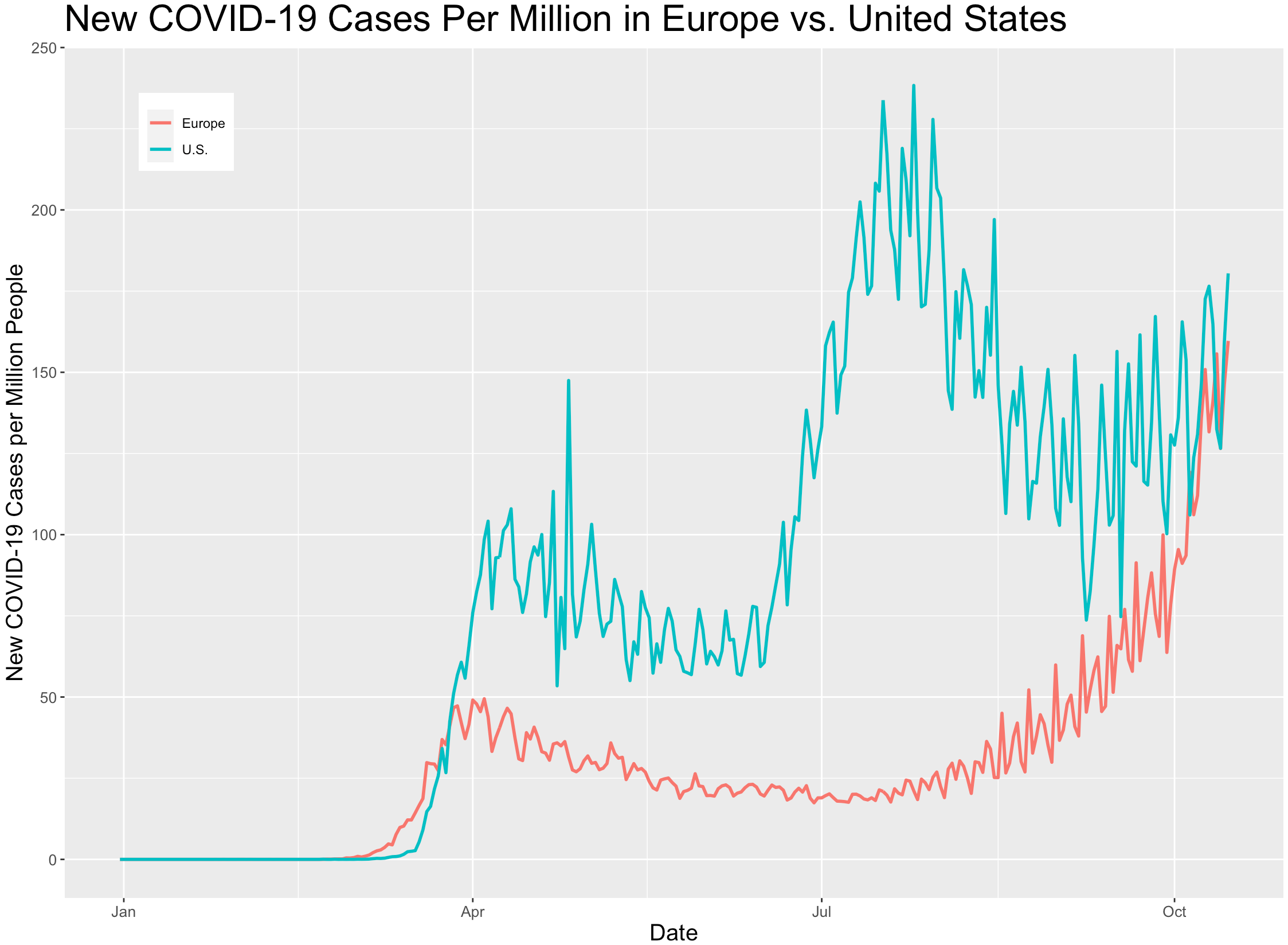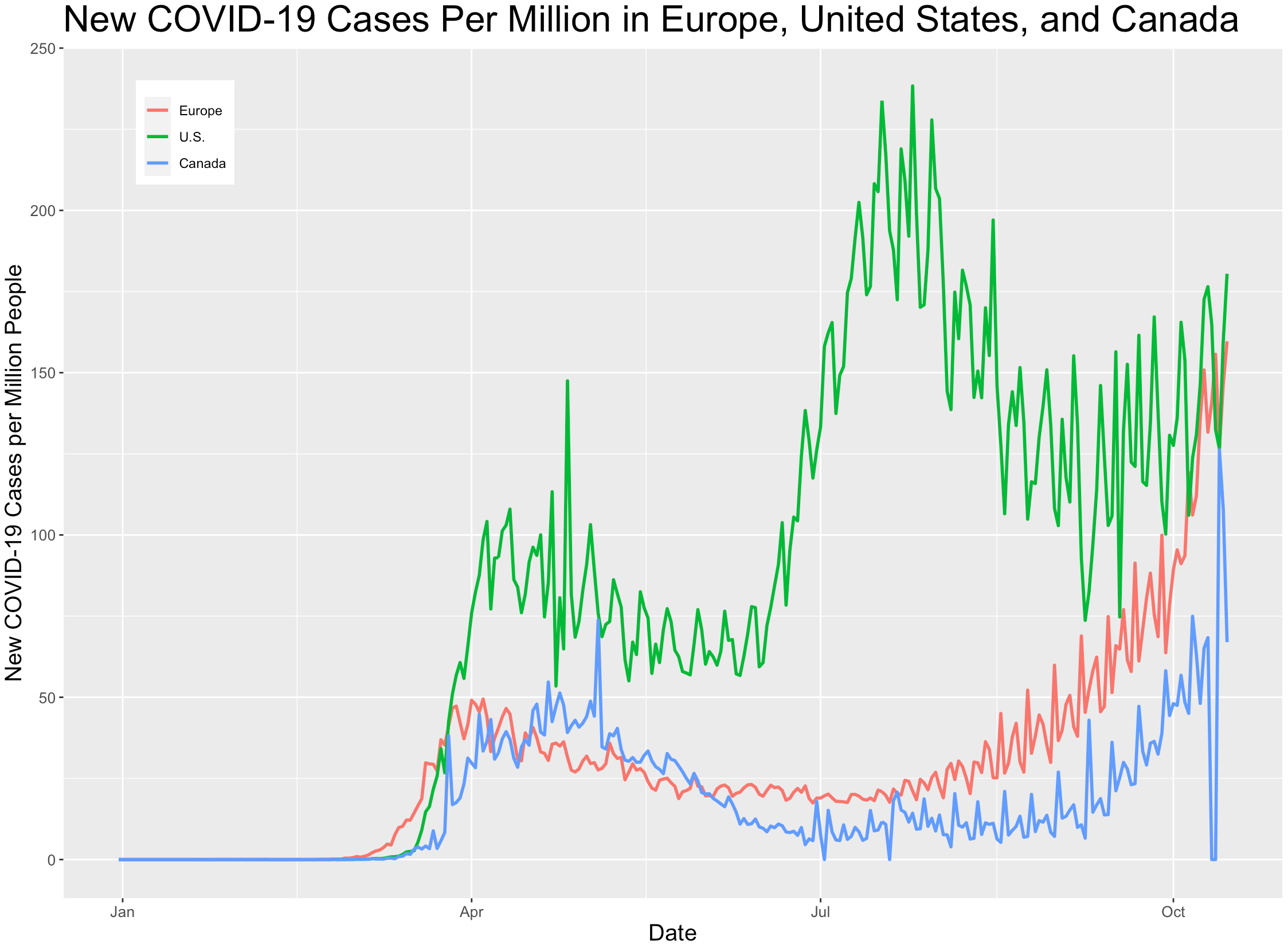(1) Mission accomplished? COVID-19 infections continue to spiral out of control in Europe. Any progress Europe made in controlling the coronavirus is now completely gone, as well as the premature gloating. On October 14, the continent (which includes 54 countries) registered more than 112,154 new infections (146 new cases per one million people), while the U.S. registered 59,386 new infections (180 new cases per one million people). This continues a trend that we noted in late September.
An updated chart, which we produced based on data from the European CDC, is depicted below. As shown, there is now little difference between the EU and U.S. in terms of new infections.

For various reasons, the on-again, off-again partial lockdowns aren't getting the job done, suggesting that the world really ought to consider an entirely different strategy for tackling the coronavirus. Regardless, healthcare systems across the globe should brace for a difficult autumn, especially since flu season is now beginning.
(2) You can become reinfected with the coronavirus, but this appears to be rare. According to the Seattle Times, a local man became the third known case of reinfection in the entire U.S. Globally, about 20 reinfections are thought to have occurred. This is good news, because it means that either natural infection or vaccination should produce immunity, at least for a little while.
(3) Probably all coronavirus treatments will cause serious but rare side effects. A couple weeks ago, AstraZeneca paused its COVID vaccine clinical trial because a volunteer suffered a serious side effect. Now, the same has happened to Johnson & Johnson. Eli Lilly, which is producing an antibody treatment, has also paused its trial over safety concerns. This underscores yet again the vital importance of seeing clinical trials to completion prior to releasing a new product to the market. Russia and China are taking an enormous gamble by injecting thousands of people with poorly tested vaccines.
(4) The World Health Organization says that healthy, young people might have to wait until 2022 to get a COVID vaccine. Given that several companies are hoping to produce billions of doses, that seems unlikely. It also seems like a bad idea, given that healthy, young people are perfectly capable of spreading the virus and have received the lion's share of the blame for the second wave. While we certainly want those with the greatest need (e.g., healthcare workers and the elderly) to receive the vaccine first, neglecting younger people may be counterproductive if they are able to spread the virus further and faster than others.
(5) Canadian Prime Minister Justin Trudeau says that the border with the U.S. will remain closed until America gets the COVID pandemic under control. The implication, of course, is that Canada does have the virus under control. But it does not. Using the same data mentioned above from the European CDC, Canada had 4,042 new infections on October 14, which is 108 new cases per million people. (That compares to 180 and 146 for the U.S. and Europe, respectively.) So, let's not brag, Justin. Canada is headed in the wrong direction. Perhaps he was too busy planning his next Halloween costume to notice.

Update on 20-October-2020 @ 9:15 pm PT: Note that the large spike downward and then upward on the Canadian line is due to a data reporting error. We discuss this in a subsequent article.




